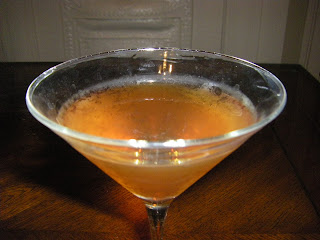It's hot in New Orleans these days, and the usual Sazeracs and bittered slings are yielding to lighter drinks, at least during the day. Here, the Pimm's Cup leads the way as the most beloved drink that can cool you off, but drinks with a tropical bent are very popular, too. In fact, the Tiki movement is in full swing.
While I usually lean towards old classics like the Daiquiri (or new classics like the East Side Fizz) at times like these, I was feeling particularly exotic today. Add that to my new acquaintance with tropical fruits, thanks to my Costa Rican girlfriend, and you have an inspiration for a cocktail that is cool, refreshing, delicious, and that makes your worries go away.
La Amorita
1.5 oz (45 ml) fresh coconut water (agua pipa)
0.75 oz (22.5 ml) fresh lime juice (jugo de limon)
2 tsp (10 ml) 2:1 demarara syrup
2 rings of fresh pineapple
1 pinch of salt
Combine ingredients and vigorously shake with ice. Strain into a rocks glass, and add shaved/crushed ice to the top. Garnish with a pineapple ring and/or other fruits in season.
Sip through a straw.
If you don't go to Costa Rica very often, you probably don't have guaro, so you can substitute a light rum, instead. For the agua pipa, buy a coconut and make two holes (side by side) in the side of it using a combined back-of-the-hammer-to-make-a-notch and drive-a-screwdriver-into-the-notch approach, which seemed to work for me. Stick a straw into one of the holes, and leave the other open. You can drain your agua pipa through the straw. The rest is pretty straight forward. I bored the straw though the strawberry from apex to base for the picture, 'cause I'm artistic like that.























